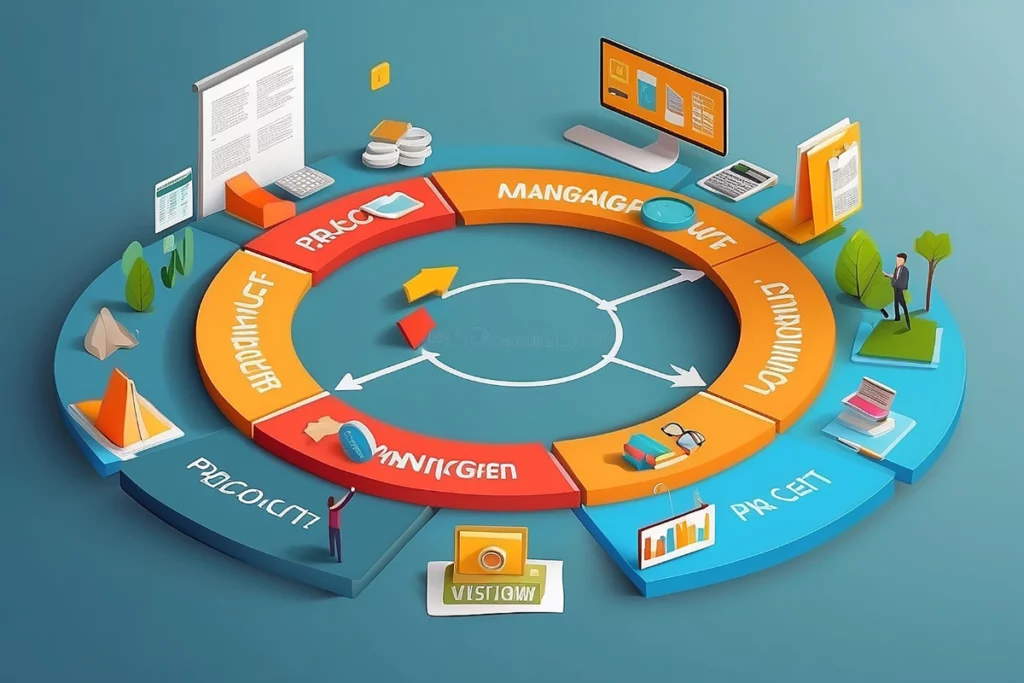Table of Contents
ToggleAs organizations strive for efficiency, flexibility, and improved service delivery, aligning ITIL, Agile, and DevOps methodologies has become a popular approach to achieving these goals. Each methodology offers distinct benefits: ITIL provides a structured framework for IT service management (ITSM), Agile emphasizes flexibility and customer-centric development, and DevOps promotes collaboration and automation across development and operations teams.
In this blog, we’ll explore how ITIL can be aligned with Agile and DevOps to create a holistic IT environment. We’ll also discuss the benefits of integrating these methodologies and provide practical tips for successful alignment.
Understanding ITIL, Agile, and DevOps
Before diving into the alignment process, it’s essential to understand the key principles of each methodology.
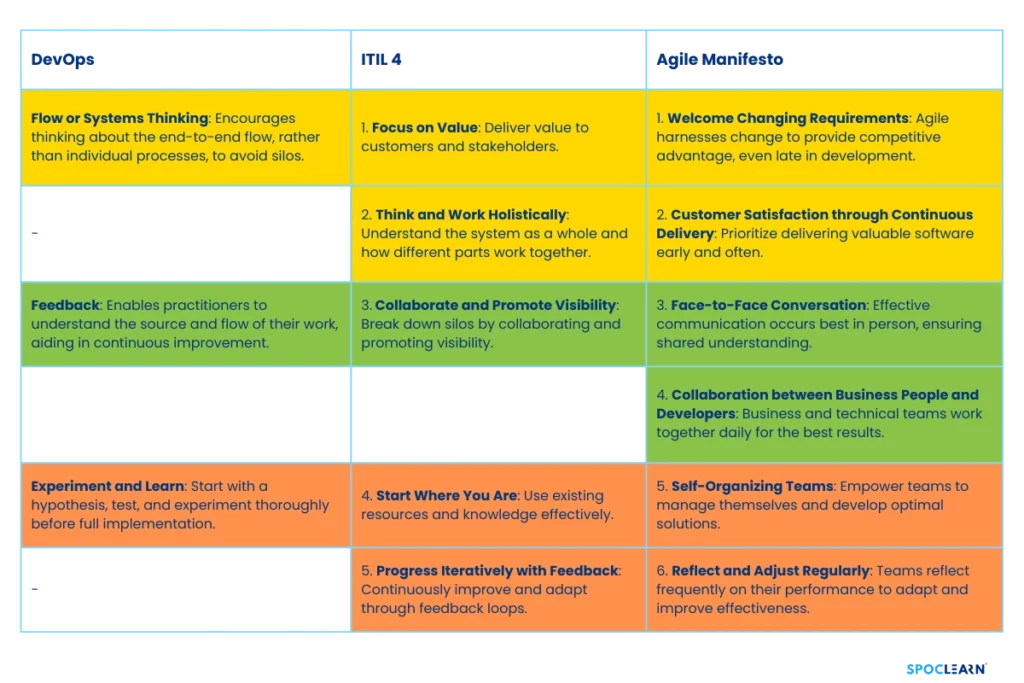
1. ITIL (Information Technology Infrastructure Library)
ITIL is a framework developed by AXELOS for managing IT services. It focuses on delivering value, aligning IT with business needs, and ensuring continual improvement through practices like Incident Management, Change Control, and Problem Management.
2. Agile
Agile is an iterative approach to software development and project management. Its core values, outlined in the Agile Manifesto, include flexibility, customer collaboration, and delivering incremental improvements. Agile methodologies, such as Scrum and Kanban, enable teams to respond quickly to changes and prioritize customer satisfaction.
3. DevOps
DevOps is a cultural and technical movement that bridges development and operations teams. By emphasizing collaboration, automation, and continuous integration/continuous delivery (CI/CD), DevOps aims to streamline the software delivery process, reduce time to market, and improve quality.
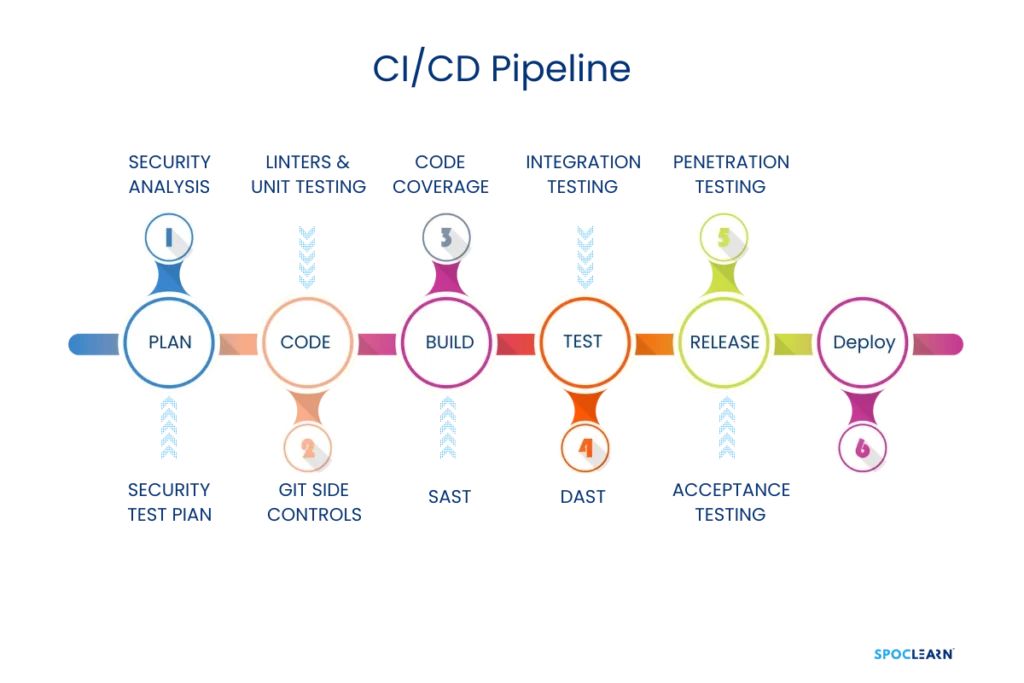
The Need for Aligning ITIL, Agile, and DevOps
While each methodology offers unique strengths, aligning them can provide a more cohesive approach to IT service management, software development, and operations. Here’s why alignment is beneficial:
- Improved Service Delivery: Combining ITIL’s structure with Agile’s flexibility and DevOps’ speed enables faster, more efficient service delivery.
- Enhanced Collaboration: Alignment breaks down silos between IT, development, and operations teams, promoting a culture of collaboration.
- Increased Responsiveness to Change: Agile and DevOps facilitate rapid adaptation, while ITIL ensures these changes are managed in a controlled and reliable manner.
- Holistic Approach to Value Creation: ITIL’s focus on value creation is complemented by Agile’s customer-centric mindset and DevOps’ emphasis on automation.
How to Align ITIL with Agile and DevOps
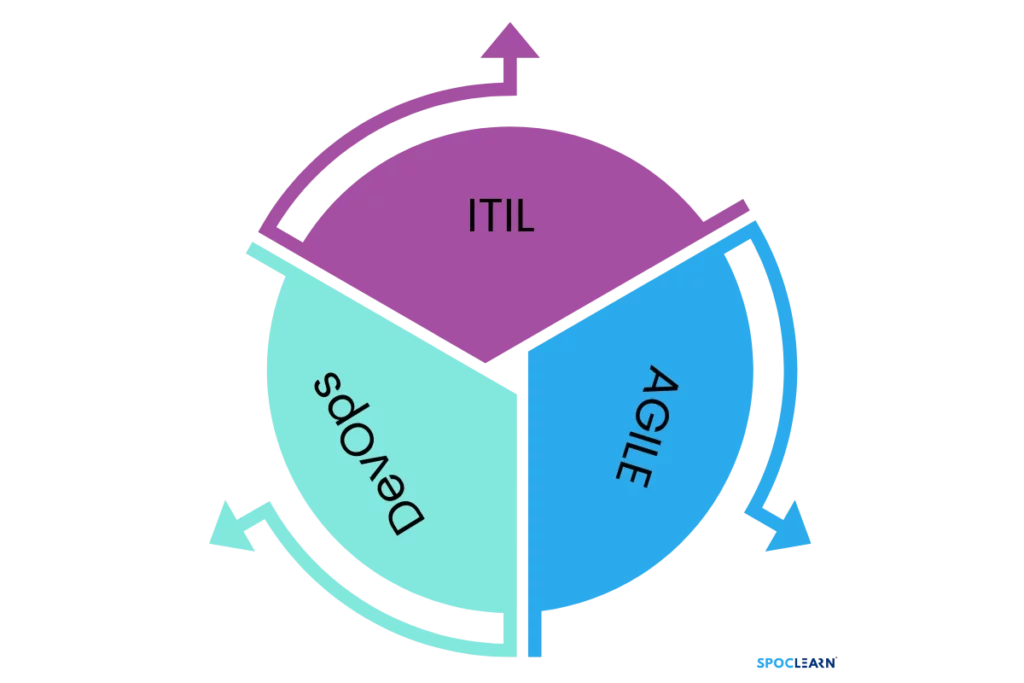
Aligning these methodologies requires a tailored approach to ensure each framework complements the others effectively. Here’s a step-by-step guide to achieving alignment:
1. Identify Common Objectives
Start by identifying shared goals among ITIL, Agile, and DevOps. Common objectives may include:
- Customer Value: Focus on delivering solutions that meet customer needs.
- Quality and Efficiency: Aim to improve service quality and streamline processes.
- Continuous Improvement: Encourage iterative improvements in both IT services and software development.
By establishing these objectives, you’ll create a foundation for alignment that benefits the entire organization.
2. Map ITIL Practices to Agile and DevOps Processes
Next, map specific ITIL practices to Agile and DevOps processes to identify synergies and potential points of integration. Here are a few examples:
- Incident Management and Agile: In Agile environments, incidents can be managed as user stories or tasks within the sprint backlog. This approach ensures incidents are prioritized and resolved efficiently.
- Change Control and DevOps: Use DevOps practices like CI/CD pipelines to automate testing and deployment, which minimizes risks associated with changes. ITIL’s Change Control can oversee significant changes, while DevOps manages smaller, more frequent updates.
- Problem Management and Root Cause Analysis: DevOps tools support ITIL’s Problem Management by enabling thorough root cause analysis. For example, monitoring and alerting tools can help detect patterns and prevent recurring issues.
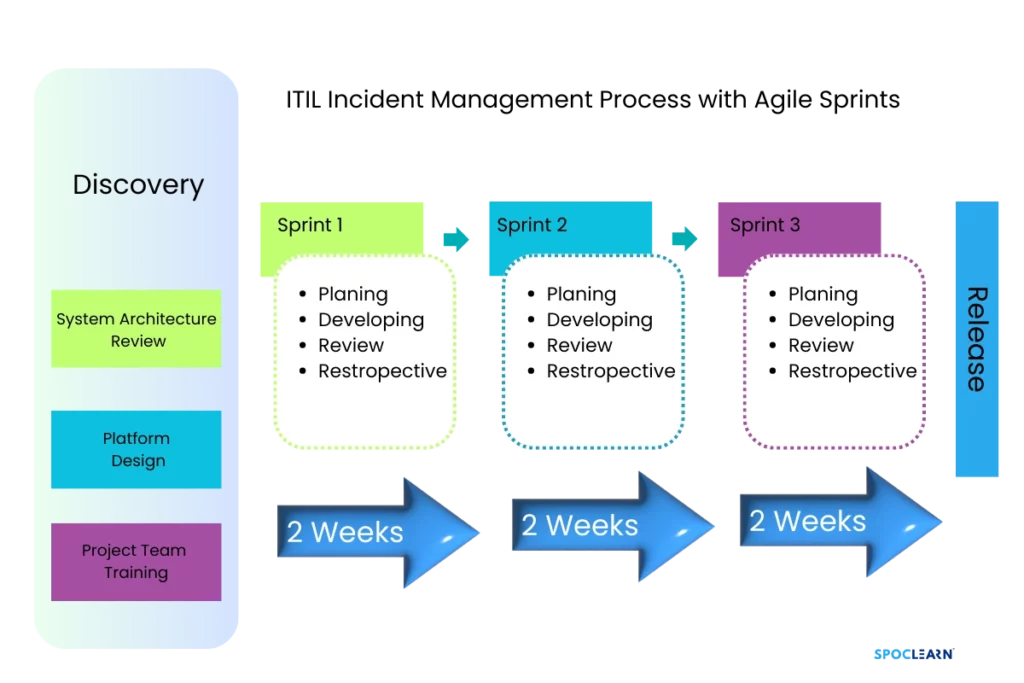
3. Establish Cross-Functional Teams
Alignment requires strong collaboration between IT, development, and operations teams. Create cross-functional teams to enhance communication and foster a culture of shared responsibility. Teams should include representatives from each area, allowing for a seamless flow of information and a unified approach to problem-solving.
4. Foster a Culture of Continual Improvement
Agile and DevOps are both rooted in continuous improvement. Implement ITIL’s continuous improvement practice by conducting regular retrospectives, performance reviews, and feedback loops. In a DevOps environment, this may include monitoring metrics and optimizing CI/CD processes. In Agile, teams can use sprint reviews to discuss improvements and adjust workflows accordingly.
5. Embrace Automation
Automation is a critical component of DevOps and can complement ITIL’s Incident Management, Change Control, and Problem Management practices. Examples of automation tools that support alignment include:
- CI/CD Pipelines: Automate testing and deployment to streamline changes and minimize risks.
- Monitoring and Alerting: Use tools like Nagios or Prometheus to detect issues and trigger automated responses.
- Configuration Management: Tools like Ansible or Puppet help manage configurations consistently, ensuring alignment with ITIL practices.
6. Develop a Unified Change Management Strategy
To align ITIL’s Change Control with Agile and DevOps, consider implementing a unified change management strategy. Use ITIL for significant changes requiring formal reviews, while DevOps handles smaller, frequent changes through CI/CD. For Agile projects, consider “Just-in-Time” change management, where changes are approved as needed within sprints to maintain flexibility.
Benefits of Aligning ITIL with Agile and DevOps
Aligning ITIL with Agile and DevOps provides several advantages, including:
1. Enhanced Service Delivery
Combining ITIL’s structured approach with Agile and DevOps enables faster, more efficient service delivery. Agile’s iterative process allows teams to deliver updates in small increments, while DevOps accelerates deployment and ITIL ensures changes are managed effectively.
2. Improved Collaboration Across Teams
Alignment fosters a collaborative culture by breaking down traditional silos. By working together, IT, development, and operations teams can share insights and solve problems more effectively, improving service quality and reducing response times.
3. Faster Time to Market
DevOps and Agile both emphasize speed and adaptability, helping organizations release products and updates quickly. ITIL ensures that these changes are well-managed, balancing the need for speed with quality and control.
4. Enhanced Customer Experience
By integrating ITIL’s customer-centric approach with Agile’s focus on value delivery and DevOps’ rapid iterations, organizations can provide a more responsive and reliable service. This alignment leads to increased customer satisfaction and strengthens customer trust.
5. Reduced Risks and Improved Compliance
ITIL’s focus on risk management and compliance is supported by DevOps automation and Agile’s adaptability. Together, they create a framework that mitigates risks, ensures regulatory compliance, and reduces the chances of errors during development and deployment.
Practical Examples of ITIL, Agile, and DevOps Alignment
1. Incident Management with Agile
In an Agile environment, incidents are treated as user stories or backlog items. DevOps tools monitor services, while ITIL Incident Management prioritizes issues based on their impact. Agile teams address incidents in sprints, ensuring swift responses without compromising ongoing projects.
2. Change Control in a DevOps Pipeline
DevOps CI/CD pipelines automate testing and deployment, allowing frequent, smaller updates. ITIL’s Change Control practice manages high-impact changes, ensuring a structured review process for critical updates. This approach balances speed with security and compliance.
3. Continual Improvement Across All Frameworks
Agile sprints include retrospective meetings to identify improvement areas, while DevOps uses metrics to optimize processes. ITIL’s Continual Improvement Practice provides a structured framework for implementing these changes across the organization, ensuring ongoing enhancement of services.
Tips for Successfully Aligning ITIL with Agile and DevOps
- Educate Teams on Each Methodology: Ensure that all team members understand the basics of ITIL, Agile, and DevOps to create a shared foundation for alignment.
- Leverage Automation: Use automation tools to reduce manual tasks, streamline workflows, and maintain compliance.
- Start Small: Begin with a pilot project to test alignment strategies before scaling them across the organization.
- Encourage a Collaborative Culture: Promote open communication and shared accountability among IT, development, and operations teams.
Conclusion: A Unified Approach to IT Service Management
Aligning ITIL with Agile and DevOps offers a comprehensive approach to IT service management, development, and operations. This integration not only enhances service quality but also enables organizations to adapt quickly to changes, streamline processes, and deliver value more effectively. By combining the strengths of each methodology, businesses can achieve their goals more efficiently and improve customer satisfaction.
Whether your organization is focused on IT service management, software development, or operational efficiency, aligning ITIL, Agile, and DevOps can provide the framework needed to thrive in today’s dynamic IT landscape.
